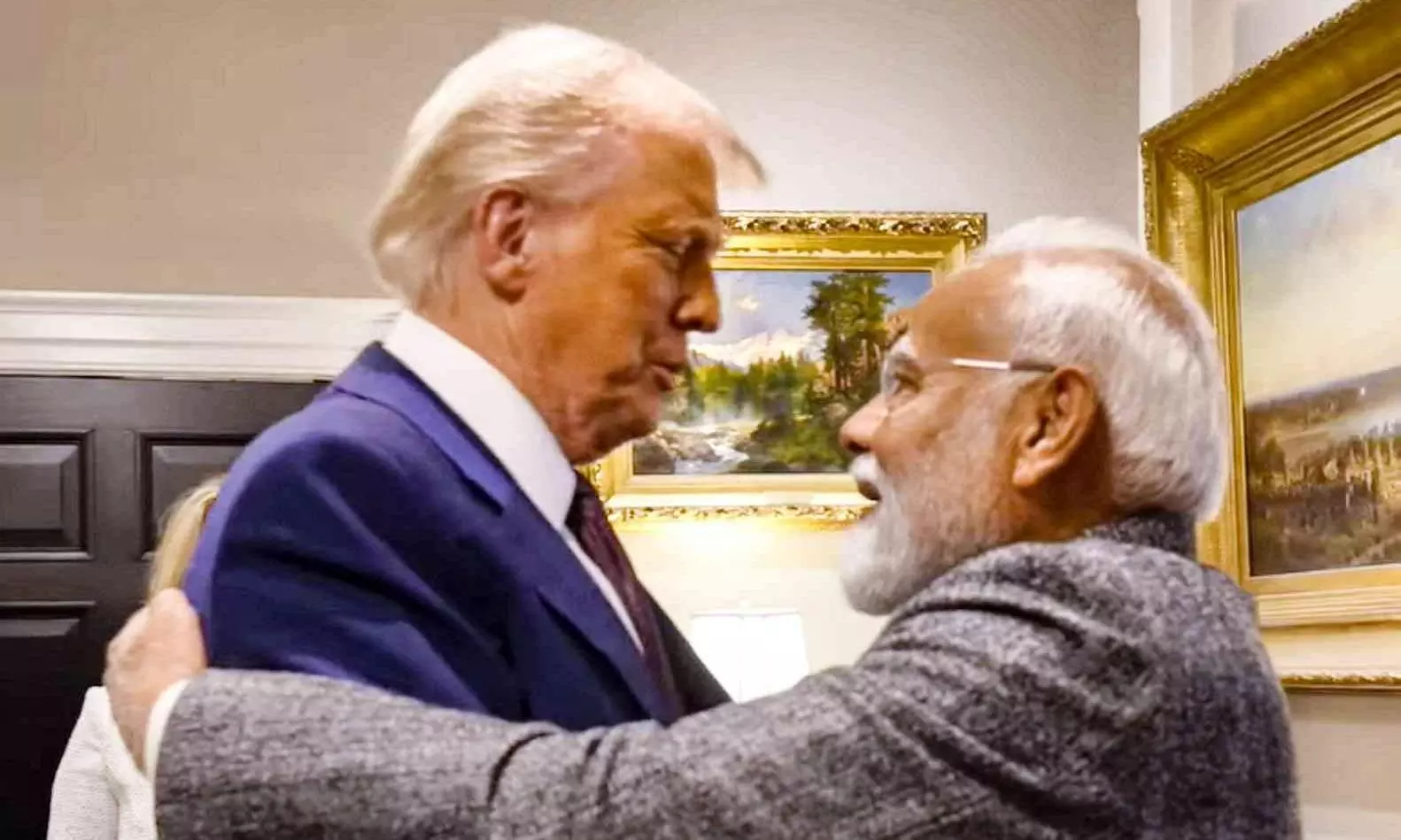
- Home
- India
- World
- Premium
- THE FEDERAL SPECIAL
- Analysis
- States
- Perspective
- Videos
- Sports
- Education
- Entertainment
- Elections
- Features
- Health
- Business
- Series
- In memoriam: Sheikh Mujibur Rahman
- Bishnoi's Men
- NEET TANGLE
- Economy Series
- Earth Day
- Kashmir’s Frozen Turbulence
- India@75
- The legend of Ramjanmabhoomi
- Liberalisation@30
- How to tame a dragon
- Celebrating biodiversity
- Farm Matters
- 50 days of solitude
- Bringing Migrants Home
- Budget 2020
- Jharkhand Votes
- The Federal Investigates
- The Federal Impact
- Vanishing Sand
- Gandhi @ 150
- Andhra Today
- Field report
- Operation Gulmarg
- Pandemic @1 Mn in India
- The Federal Year-End
- The Zero Year
- Science
- Brand studio
- Newsletter
- Elections 2024
- Events
- Home
- IndiaIndia
- World
- Analysis
- StatesStates
- PerspectivePerspective
- VideosVideos
- Sports
- Education
- Entertainment
- ElectionsElections
- Features
- Health
- BusinessBusiness
- Premium
- Loading...
Premium - Events

India and other BRICS nations must act together with EU, Japan, South Korea and Australia to salvage rules-based world trading system after Trump’s demolition drive
Huggies do not hug as tight as Narendra Modi when presented with a world leader. Prime Minister Modi has embraced US President Donald Trump warmly as well as tightly many times over. Yet, all that frenetic hugging has not held Trump’s hand while dishing out reciprocal tariffs to countries that are deemed to be taking advantage of America’s regime of low tariffs. India has been slapped with 26 per cent tariffs, although pharma exports have been exempted.
India wouldn’t gain from trade hostilities
It is a political setback for Modi and his strongman image. But India should refrain from any kind of retaliatory tariffs. The Indian economy stands to gain by reducing its level of protection, raised, over the last 11 years, by the Modi government. Further, India does not gain from deepened trade hostilities.
Also read: Trump’s tariffs: These Indian sectors may be worst hit but experts spot ‘gains’ too
Right now, the action is limited to goods. If the arena of trade battle expands and extends to services, that could really hurt. Service exports, counting information technology services and IT-enabled services, including the 1,700 plus Global Capability Centres operating in India do not just bring in direct export earnings. These raise India’s soft power, enable social mobility for rural families sending an offspring to college, and contribute to India becoming the world’s largest recipient of remittance incomes, at just short of $130 billion.
India should keep trade battle to goods
Some might feel this is the right time to let off a fresh salvo against American e-commerce presence in India, American software product vendors or American cloud service providers. Perish the thought. Whatever other countries do, India should keep the trade battle to goods.
The impact on India of the Trump tariffs has to be assessed not just in terms of the tariffs levied on India and their direct impacts, but by taking into account how the tariffs levied on other economies affect their trading behaviour.
Also read: Why is Trump calling April 2 ‘Liberation Day’? What does he want that day?
For example, Bangladesh faces tariffs of 37 per cent, while India faces tariffs of 26 per cent. So, this, in fact, improves the competitiveness of Indian garment exports vis-à-vis Bangladesh garment exports, compared to the status quo. China and Vietnam face steep tariffs in the US. They could divert the exports no longer welcome in the US to markets like India, increasing the competition from imports for Indian domestic producers. Steel has already received anti-dumping protection. Pleas for anti-dumping and safeguard duties could increase from a swathe of industries.
BRICS must save global trade
This applies to other economies as well. Domestic tariff walls could go up across the world. The US is breaking the Most-Favoured-Nation cornerstone of the multilateral trading system. It is not in India’s interest to allow Trump to wholly wreck the rules-based trade order represented by the World Trade Organisation (WTO). India and fellow BRICS nations, along with the EU, Japan, South Korea and Britain, should act to prevent global trade from spiralling into a beggar-thy-neighbour disaster.
Also read: Trump’s ‘Liberation Day’ of tariffs is coming; how is India gearing up for it?
Nor is the threat to trade alone. In the normal course, tariffs mean a one-time rise in prices and do not create sustained price increases. But both because Trump keeps changing his tariff regime, and because the effects of tariffs, direct as well as indirect, will take time to work their way through the world’s economies and rebound back on the US, not to speak of the uncertainty Trumpian policies engender, inflationary effects could be prolonged. That could mean policy action by the US central bank.
Fear of rate changes
Rate changes by the Federal Reserve would, in turn, impact exchange rates and interest rates around the world, little of it in a beneficial fashion. We would once again see stock markets rise and fall, commodity prices pirouette, national growth rates fall, and political regimes come tumbling after.
The Trump tariffs are extremely self-seeking. Now, they exclude goods covered under and are compliant with the US Mexico Canada Agreement (USMCA), because Trump could not withstand the pressure from the automobile lobby, who were up in arms after he levied 25 per cent duty on imports from Canada and Mexico, including on automobile parts.
Also read: Trump eyes third term; can a 'loophole' in US law aid his ambitions?
Trump unlikely to reach MAGA goal
The Reciprocal Tariffs exempt goods the US do not have domestically. This means that the US would continue to import Russian uranium for its nuclear power plants, and heavy Canadian crude that many American refineries are tuned for, as well as pharmaceutical products.
Yet, Trump is unlikely to make America great again. Why would anyone invest in fresh US manufacturing capacity, when the tariffs that justify local production might not survive the Trump term? Comparative advantage and gains from trade are not empty slogans. Why should post-Trump leaders renounce their bounty, when the number of robots deployed on the factory floor, the quality of artificial intelligence-driven algorithms that control the robots, and capacity for edge-computing all go up by leaps and bounds? Even if domestic manufacturing does go up in the US, it would not appreciably increase manufacturing employment. Why all the pain, without political gain, in terms of more industrial jobs?
Also read: Trump 2.0: Wannabe peacemaker comes across as a warmonger
India should pitch for WTO sans US
Trump has been talking of a third term that is unlikely to materialise. Mid-term elections in 2027 are likely to show that MAGA supporters realise the folly of MAFA – Make America Fortress America.
India and other BRICS nations should take the lead to salvage the global trading system. The EU, Japan, South Korea and Australia are all incensed by how they have been treated. India should propose creating a new WTO without the US. This could be done as a plurilateral agreement within the WTO, in which all countries join in other than the US, or outside the WTO altogether, to follow the same rules as the WTO, complete with a Dispute Settlement Mechanism, and an Appellate Authority that is functional, as the US is no longer around to oppose any nomination to the body.
There is much to be done in the face of the Trump tariffs, but retaliatory tariffs do not figure in that to-do list.
(The Federal seeks to present views and opinions from all sides of the spectrum. The information, ideas or opinions in the articles are of the author and do not necessarily reflect the views of The Federal)


